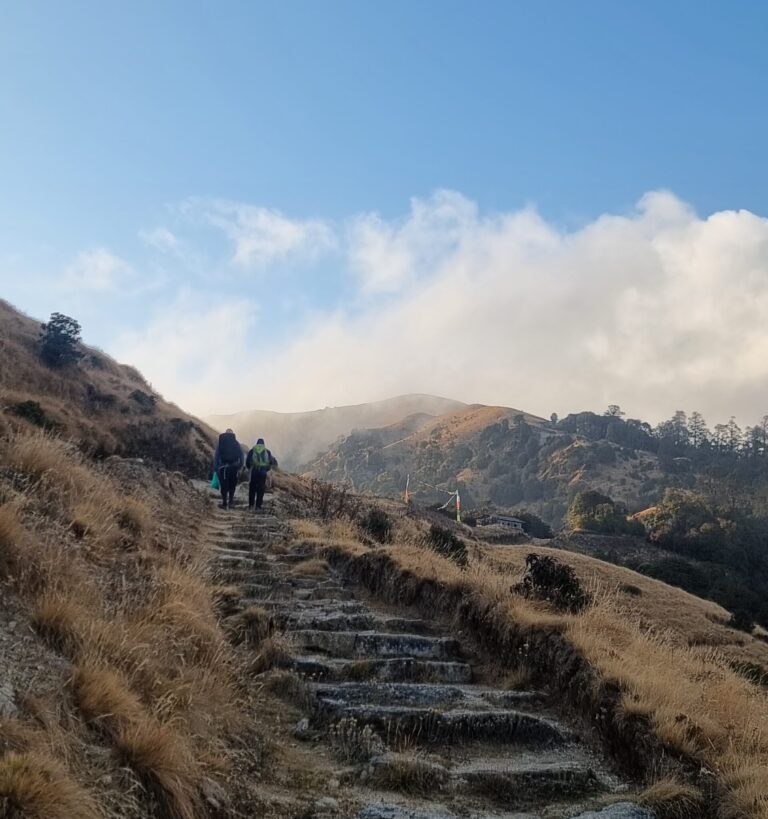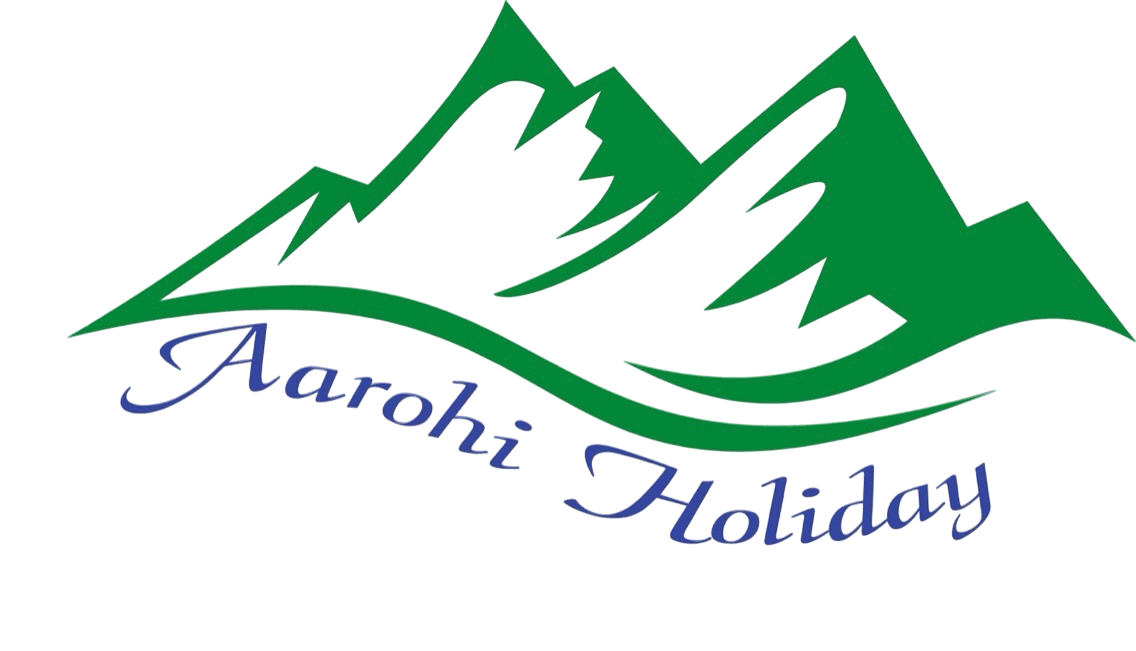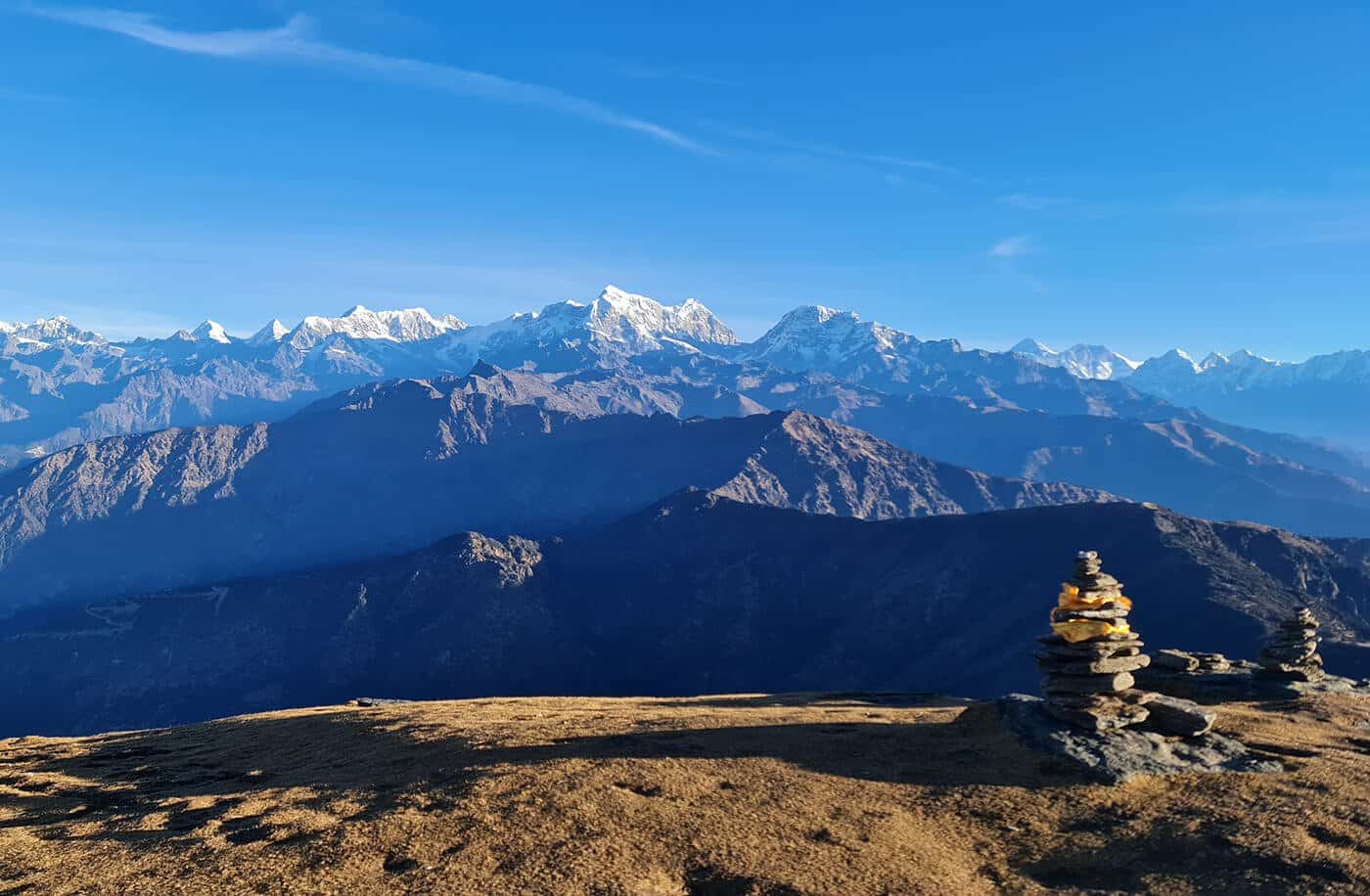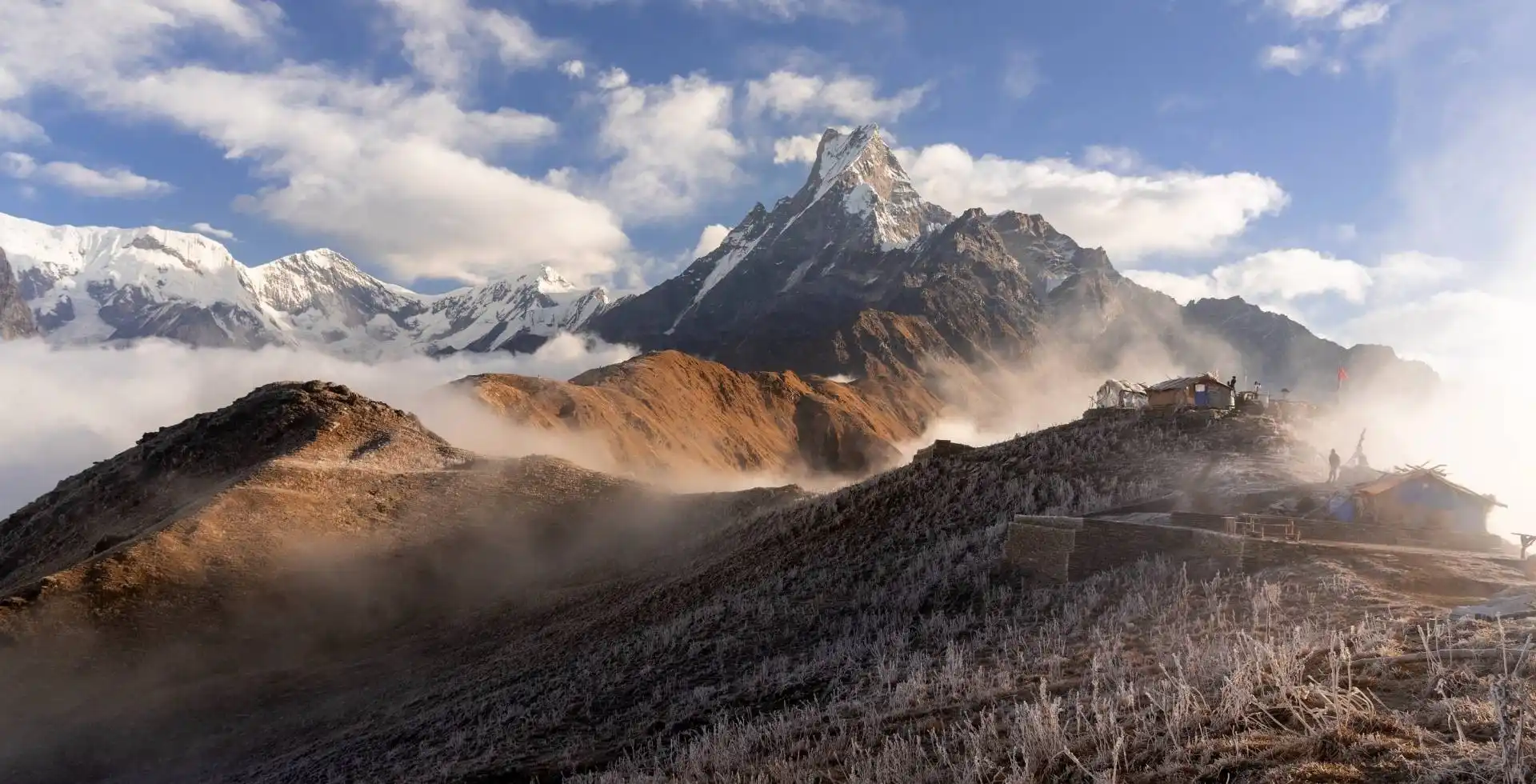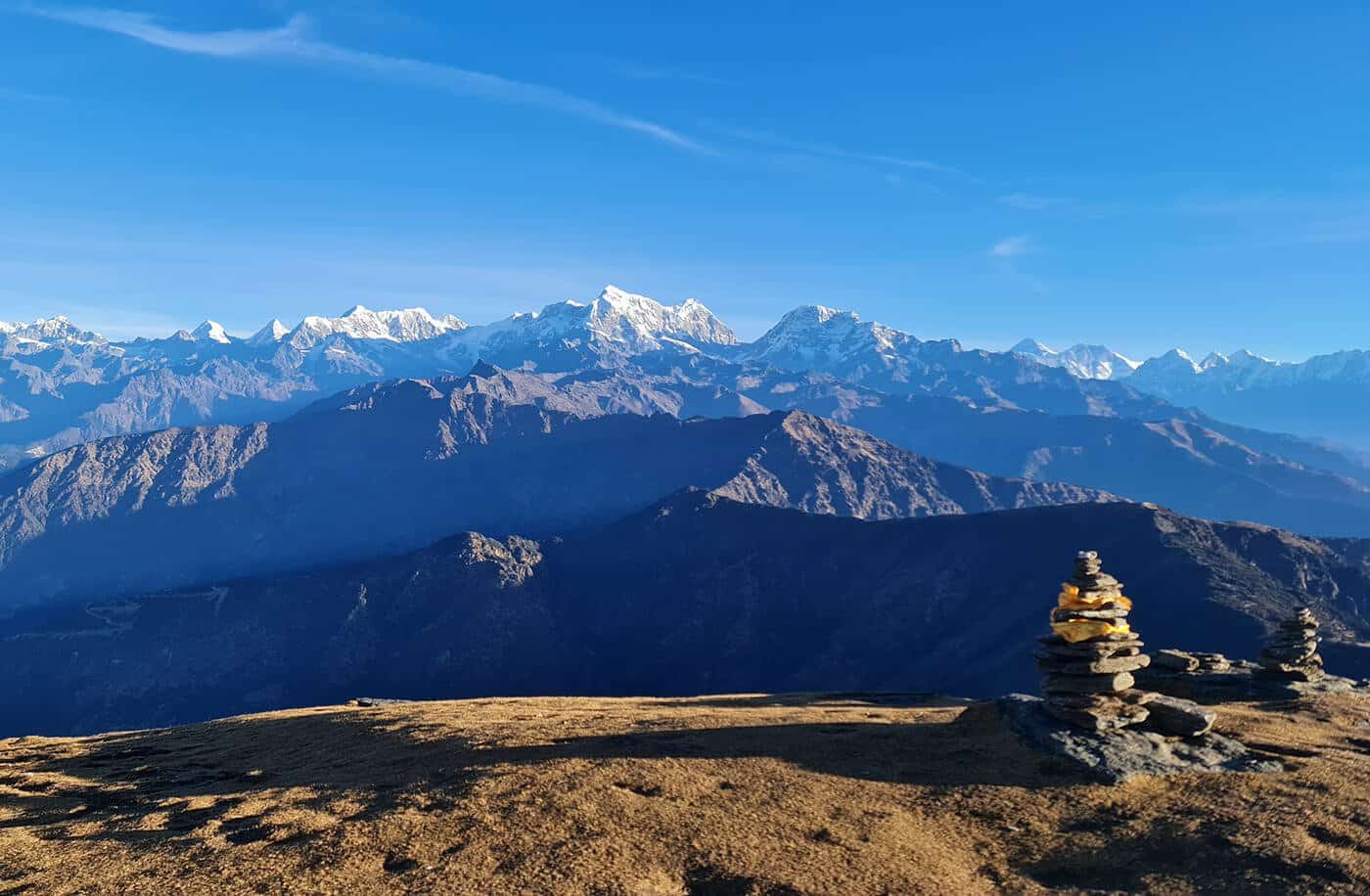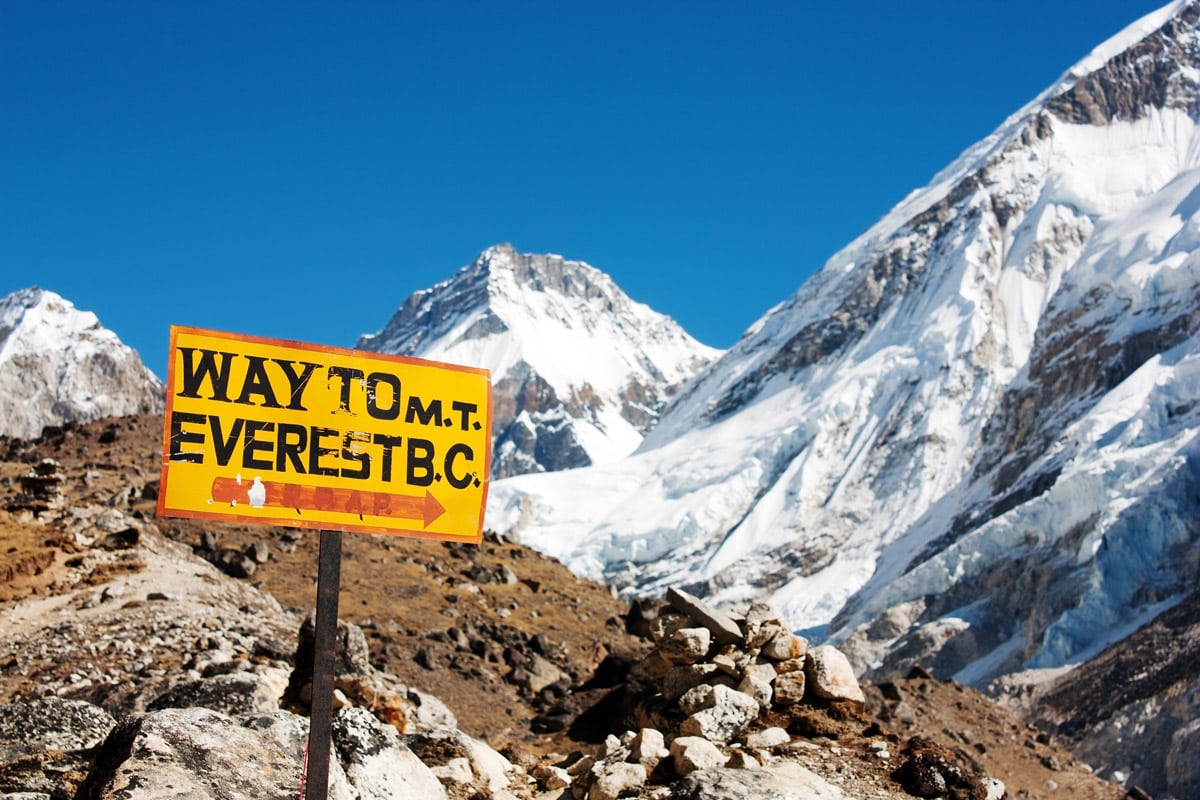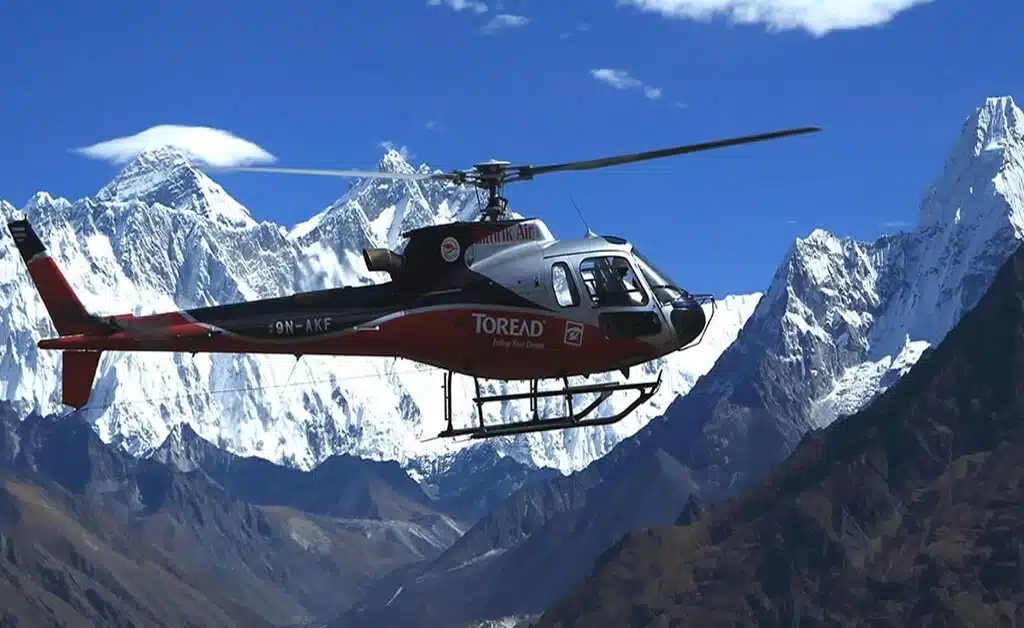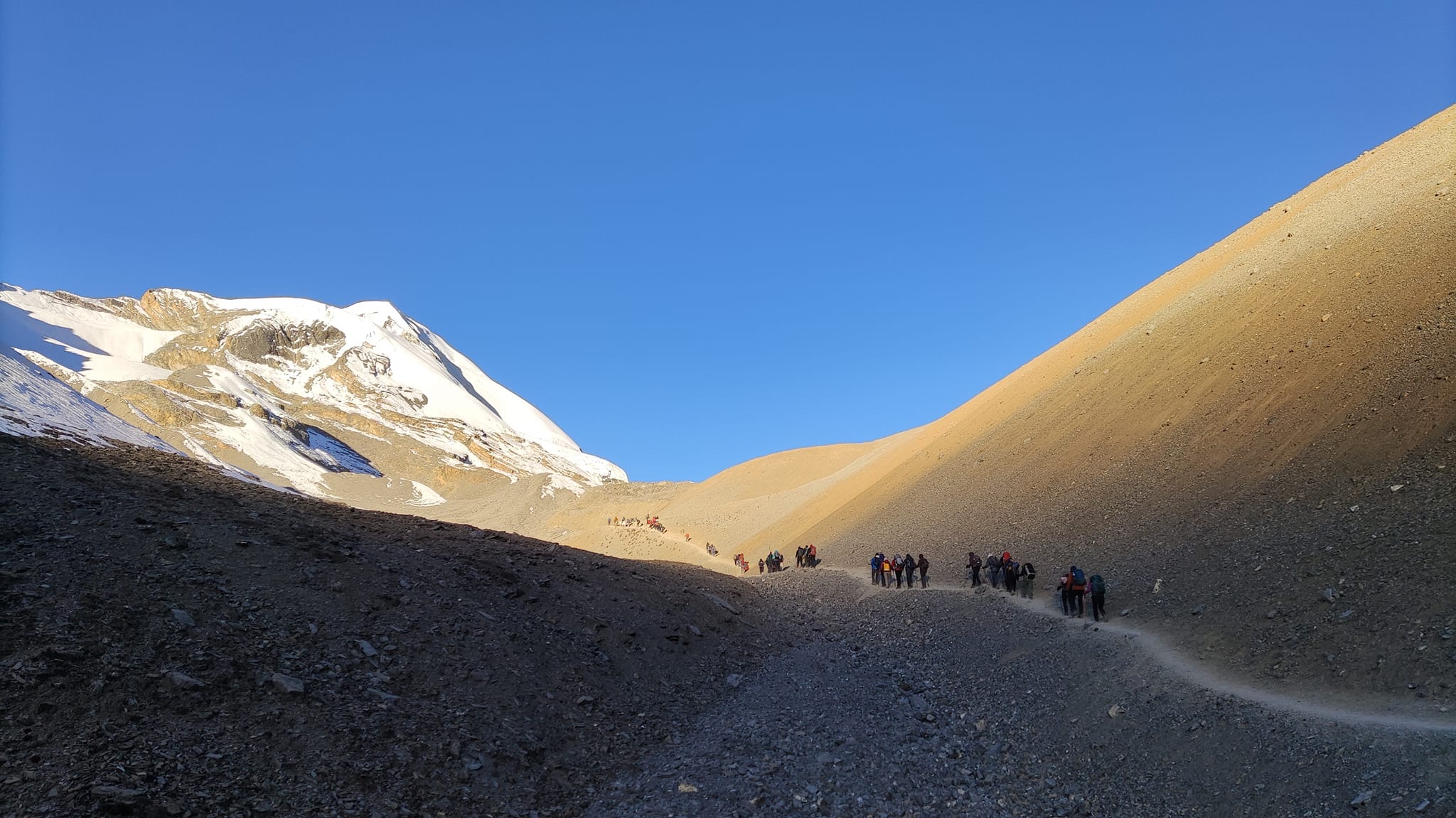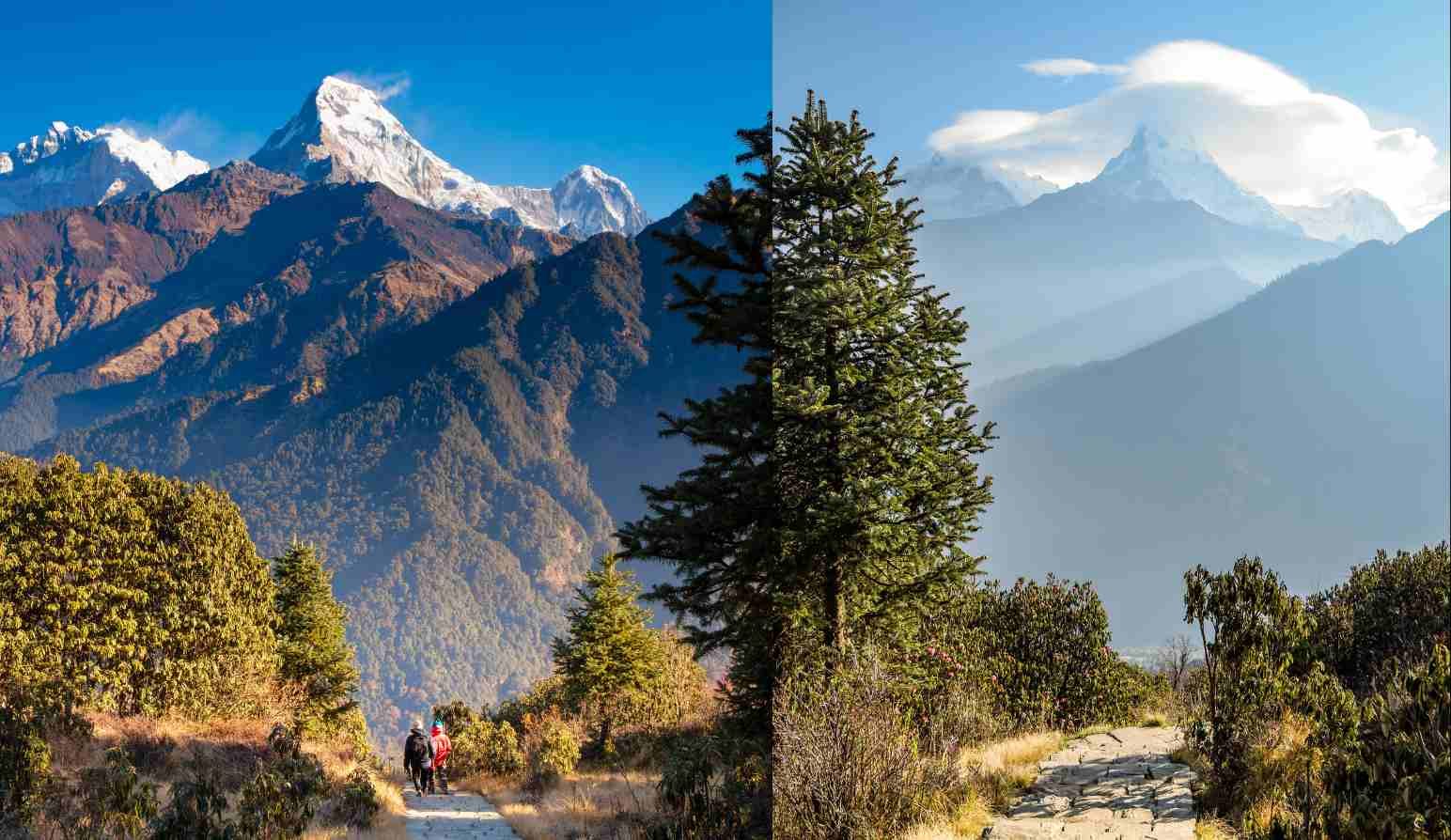Accommodation during Pikey Peak Trek
- In Kathmandu we provide comfortable accommodation in 3-star hotels with breakfast on a twin-sharing basis.(Private room accommodation can be organized at an extra cost)
- During the trek, we provide comfortable teahouse accommodation on a twin-sharing basis.
Meals and Drinking water on Pikey Peak Trek
On the Pikey Peak Trek, you’ll be treated to three warm, freshly cooked meals a day—breakfast, lunch, and dinner—served at traditional teahouses along the route. Expect simple but satisfying Nepali mountain food like dal bhat (rice, lentils, and vegetables), fried noodles, soups, pasta, pancakes, eggs, and sometimes even momos (dumplings). The meals are designed to give you the energy you need for the day’s hike, and the teahouse hospitality makes every bite feel homely.
Staying hydrated is super important, especially as you gain altitude heading toward Pikey Peak (4,065m). Bottled water is available at most teahouses, but we highly recommend carrying a reusable water bottle. Our guides bring water purification tablets or filters, so you can safely refill from local taps or natural streams along the way—better for you and the environment.
Required Permits for the Pike Peak Trek
You do not require any permit for the Trek to Pikey Peak if you follow our standard 11-day itinerary. However, the condition is likely to change with the change in the itinerary.
If you start the trek from Shivalaya instead of Dhap Bazaar, you’ll need a Gaurishankar Conservation Area Permit. You can obtain this permit from the checkpoint in Shivalaya or the Nepal Tourism Board office in Kathmandu. The permit costs NPR 3,000 per person.
Furthermore, if you combine Pikey Peak with Everest Base Camp Trek, you must obtain two additional permits: the Khumbu Pasang Lhamu Rural Municipality Permit and the Sagarmatha National Park Permit.
You can get the Khumbu Pasang Lhamu Rural Municipality Permit from the checkpoint at Lukla or Monjo. It costs NPR 3,000 per person. Likewise, you can get the Sagarmatha National Park Permit for NPR 3,000 from Monjo or Kathmandu.
Best Time for Pike Peak Trek
The best seasons to trek Pike Peak are spring (March–May) and autumn (September–November), when you’ll get clear skies, comfortable weather, and breathtaking mountain views that make every step worth it.
Winter (December–February) is quieter but chilly, so bundle up if you’re going then. The monsoon season (June–August) brings rain, slippery trails, and cloudy views, so it’s not the best time for trekking.
Pike Peak Trek Difficulties
The Pike Peak Trek is moderately challenging and doesn’t require technical climbing skills, making it doable for adventurous folks with a decent fitness level. You’ll be hiking 5 to 7 hours a day over varied terrain—think rocky trails, forested paths, and some steady climbs that can get pretty steep in places.
The trek’s highest point reaches around 4,065 meters at Pikey Peak, so altitude sickness is a real concern if you don’t take time to acclimatize properly. Key sections, like the climb from Jhapre to Pikey Peak or longer routes starting from Shivalaya, will test your endurance and require steady pacing to keep you going strong.
Weather can make things trickier too. Rain or snow can turn trails slippery, especially on exposed ridges or forested stretches. While this trek is great for fit beginners, it’s a good idea to come prepared with solid gear, some physical conditioning, and a mindset ready for the challenge. With the right prep, you’ll be set for an amazing Himalayan adventure.
Altitude Sickness and Prevention on the Pike Peak Trek
At Aarohi Holiday, your safety comes first. The Pike Peak Trek takes you above 3,000 meters, with the peak itself hitting 4,065 meters, so being aware of altitude is super important. Our guides are pros, trained in high-altitude response, first aid, and emergency procedures, so you’re in good hands.
Our itinerary is designed with a gradual climb to help your body adjust to the altitude naturally. Our team keeps a close eye on everyone, watching for signs of Acute Mountain Sickness (AMS) like headaches, dizziness, nausea, or feeling out of breath.
If you start feeling off, our guides jump into action—whether it’s suggesting a rest, pushing more water, or, if necessary, heading down to a lower altitude. In rare cases, we’re ready to organize a quick emergency evacuation. Before the trek kicks off, we give you a thorough safety briefing and encourage you to speak up about any discomfort right away. With our experienced team, a steady pace, and the right precautions, the Pike Peak Trek is a safe and unforgettable journey into the Himalayas.
Travel Insurance for Pike Peak Trek
At Aarohi Holiday, we strongly recommend getting comprehensive travel and medical insurance before heading out on the Pike Peak Trek. Since this trek takes you above 3,000 meters, with the peak reaching 4,065 meters, it’s crucial that your insurance covers high-altitude trekking. Make sure your policy includes medical treatment, personal accident coverage, and emergency helicopter evacuation, just in case.
It’s also a good idea to ensure your insurance covers trip cancellations, delays, lost baggage, and other unexpected hiccups. Trekking in the remote Himalayas can come with its own set of challenges, and having solid insurance gives you peace of mind. With the right coverage, you can focus on soaking in the stunning views and enjoying the adventure with Aarohi Holiday, knowing you’re protected if anything goes wrong.
Pike Peak Trek Itinerary
The Pike Peak Trek is a captivating journey through the lower Everest region, offering stunning Himalayan views, serene trails, and a taste of local Sherpa culture. Your adventure kicks off in Kathmandu, where you’ll land and get a chance to soak in the city’s vibrant energy while preparing for the trek. A scenic drive then takes you to Dhap, the starting point of your mountain journey.
From Dhap, you’ll trek through lush forests, charming villages, and open ridges, gradually climbing toward the breathtaking Pikey Peak. Along the way, you’ll pass through places like Jhapre and Pikey Peak Base Camp, each offering incredible views and a chance to connect with the peaceful Himalayan landscape. The highlight is an early morning hike to Pikey Peak itself, where a sunrise panorama of Everest, Kanchenjunga, and other peaks will leave you speechless.
The descent takes you through more scenic trails and welcoming villages like Jasmane Bhanjyang, Junbesi, and Taksindu, where you can immerse yourself in the warmth of Sherpa hospitality and explore local monasteries. The trek wraps up in Phaplu, followed by a drive back to Kathmandu, giving you time to reflect on the unforgettable journey.
This 11-day itinerary is a perfect blend of adventure, culture, and natural beauty, making the Pike Peak Trek an ideal choice for those seeking a less-crowded Himalayan experience with moderate challenges and plenty of awe-inspiring moments.
Pike Peak Trek Cost
Our 11-day Pike Peak Trek is priced at USD $750 per person, delivering an all-inclusive journey through the breathtaking lower Everest region. This package includes transportation from Kathmandu to Dhap and Phaplu, Gaurishankar Conservation Area permits (if required), three daily meals, teahouse accommodations, and the expertise of our experienced guides and porters. The highlight is the unforgettable sunrise view from Pikey Peak, showcasing Everest and other Himalayan giants, paired with cultural immersion in Sherpa villages. Group discounts of 5% to 10%, with one group leader trekking free.
Important Notes for Pike Peak Trek
- Travel from Kathmandu to Dhap takes 8-10 hours, and from Phaplu to Kathmandu takes 8-10 hours by local bus. If you prefer to travel in a private jeep, feel free to inquire about the additional cost
- One porter is shared between two trekkers, carrying up to 20kg total. We recommend packing under 10kg per person, and a duffle bag will be provided for your gear
- Three meals a day (breakfast, lunch, dinner) are included during the trek, served from teahouse menus. Extras like hot showers, Wi-Fi, or device charging at teahouses are not covered.
- Meals in Kathmandu are not included, except for breakfast at 3-star hotels and a farewell dinner in Kathmandu.
- Sightseeing entry fees are not included in Kathmandu.
- Drones require hard-to-get permits, so it’s best not to bring
Fitness Preparation for the Trek
The Pikey Peak Trek is a moderately challenging adventure, with 5–7 hours of daily hiking across diverse terrain, reaching an elevation of 4,065m at Pikey Peak. No technical climbing skills are needed, but solid physical fitness ensures you fully enjoy the stunning views of Everest and vibrant Sherpa culture. Prepare with regular cardio exercises like brisk walking, jogging, or cycling, 3–4 times a week, for 4–6 weeks before your trip. Short hill walks or stair climbing will build leg strength for the ascents. With a bit of prep, you’ll be ready to conquer this unforgettable Himalayan trek! Contact us to plan your Pikey Peak journey today!
Trekking Day for Pike Peak Trek
Each trekking day on the Pikey Peak Trek begins with a hearty breakfast at your teahouse, preparing you for 5 to 7 hours of hiking through the Lower Everest Region’s diverse landscapes. You’ll traverse lush forests, serene meadows, and traditional Sherpa villages like Jhapre, with stunning views of Everest, Lhotse, and Makalu unfolding along the way.
A highlight is the day you ascend to Pikey Peak (4,065m), where sweeping Himalayan panoramas and golden sunrises over the world’s highest peaks await. These longer days involve moderate climbs but reward you with tranquil trails and cultural encounters. With our expert guides ensuring proper pacing, regular breaks, and altitude awareness, each day blends adventure, culture, and awe, making your trek safe, rewarding, and unforgettable.
Arrival Instruction
Upon your arrival at Tribhuvan International Airport, our company representatives are stationed to welcome you to the country. We request you to carefully look for your name being held by our representatives following the events upon landing. The representatives are responsible to escort you to your hotel in Kathmandu. You will see men offering you to carry luggage and take you to your destination as you exit the airport. We request you pay no attention to these people and follow the designated representatives and follow their instructions. You will also need to keep an eye on your luggage and belongings to avoid any complications
Nepal Visa Entry Procedure
For entry into Nepal, there are visa requirements everyone (except Indian nationals) must complete before being allowed to pass through immigration. This is for air travel as well as overland transportation. Most visitors may obtain a visa to enter Nepal, however, there are exceptions. Three options are available for entry.
- 15-day single entry: US $30
- 30-day single entry: US $50
- 90-day multiple entries: US $125
Please have a passport valid for at least 6 months from the time of entry, and have cash ready, preferably in US dollars, though there are other currencies Nepal Immigration accepts. If you are entering via overland, you must have US cash and 3 passport photos. For arrival by air, the kiosks at the airport take your picture for you.For the most up to date list of exceptions for visa on arrival or to obtain the most current visa information, visit the Nepal Department of Immigration website.
